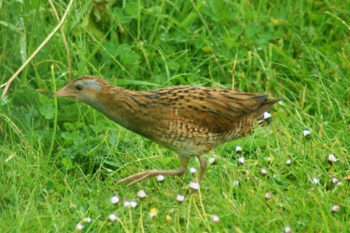Scottish Birds: Birds of Prey, Garden Birds & More
Scotland’s varied and diverse landscapes, coastlines and coastal waters provide habitats for a huge range of Scottish birds.
From Scotland’s farmlands to its city gardens, from its woodlands and forests to its mountain peaks, from its craggy cliffs to its bogs and verdant glens, from its burns and rivers to its beautiful beaches, the country is a Mecca for bird watching.
The creation of a 3-acre lochan on our nature reserve has been terrific for bird life.
While it would be quite a feat to enumerate and discuss all of the Scottish birds in just one article, read on to learn just a little about some of the country’s most interesting and iconic species.
Click on a specific Scottish bird to jump to a dedicated section on that species:
















Bonxie (Great Skua)
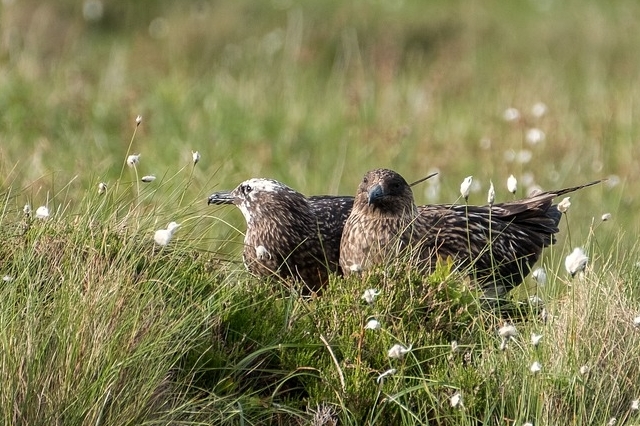
The Great Skua, also known as the Bonxie, is a large seabird with a wingspan of 125-140cm. These dramatic Scottish birds are found on the far northern islands of Scotland, and on some northern reaches of the mainland, migrating here from their wintering grounds off the coasts of Spain and Africa.
Famed for their ferocity, these birds steal and plunder from other seabird species, and have been known to dive bomb humans who approach their nests. There are currently believed to be 9,634 breeding pairs in the country.
Common Buzzard
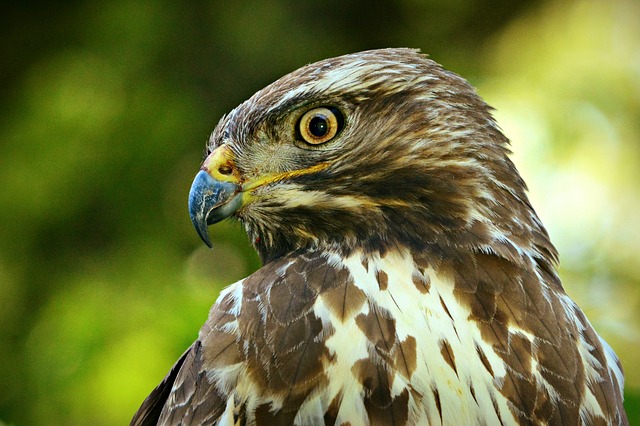
The buzzard is a common site in Scotland and is the most widespread of the UK birds of prey. Varying in colour from light to dark brown, the buzzard can be identified by its broad, rounded wings with dark tips, a short neck and finely-barred tail. They fly with tail fanned and their wings held in a shallow ‘V’.
Buzzards eat small mammals, birds and carrion and also worms and larger insects when other food is in short supply. While common, these birds of prey are a majestic site in the Scottish countryside.
Capercaillie
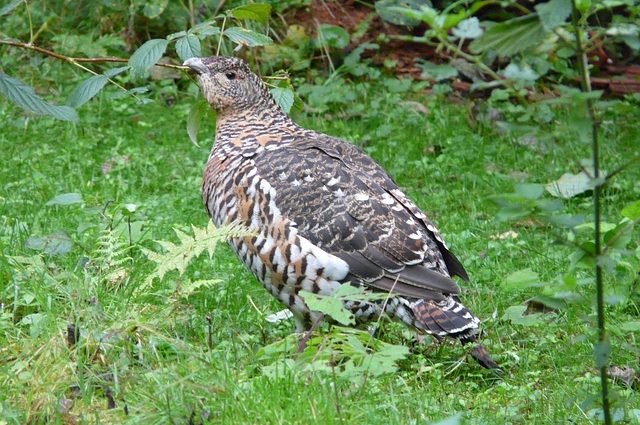
The capercaillie is one of the most precious, and endangered, woodland Scottish birds species. These ‘horses of the woods’ (the translation of the Gaelic from which their name is derived) can weigh in at as much as 4kg – around the same as a turkey. The largest are the males, while females tend to be only around half the weight. They are the largest grouse species in Scotland.
The dramatic displays made by the males of the species are one of the wildlife wonders of the country, which are undertaken at protected breeding sites called ‘leks’. Sadly, numbers have declined significantly since the 1970s – though efforts are in place to protect the small and vulnerable populations that remain.
Corncrake
Corncrakes are another species of the most rare and endangered Scottish birds. Changes in land management and farming practices have caused numbers to plummet, though targeted landscape management in recent years has aided in the bird’s recovery. Summer visitors, corncrakes are now only found over a fraction of their former range, holding out in northern and western parts of the country.
They are related to moorhens and coots, but live on dry land. They are a smallish bird (a little larger than a blackbird) and spend most of their time hidden in tall vegetation, usually detected only by means of their rasping call.
Crested Tit
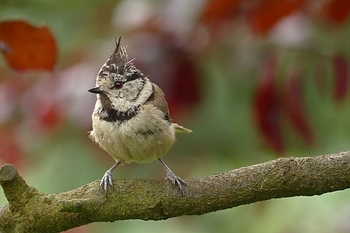
One of the most endearing Scottish bird species found in the ancient Caledonian forest, the crested tit is another iconic Scottish bird. Though not as colourful as some other types, these birds are easily identified by their black and white crests. The crested tit is largely confined to areas of Scottish pine forest though can sometimes be seen on bird feeders within and close to its native range.
These birds spend much of their time foraging on the trunks and large branches of Scot’s pine trees in old grown areas and plantations. There are currently believed to be around 1,500 breeding pairs.
Scottish Crossbill
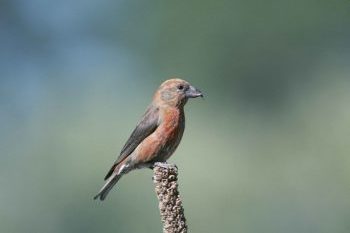
The Scottish crossbill is unique as this is the only bird species endemic to the UK – the only terrestrial vertebrate species that is unique to the British Isles. Like the crested tit, this bird is also found in the Caledonian forests of Scotland and in forestry plantations. These birds predominantly eat pine seeds.
The males and females are unique in appearance and colouration. This is one of three crossbill species found in Scotland’s pine forests, along with the crossbill and the parrot crossbill. These species are largely distinguished from one another by beak size.
Dipper
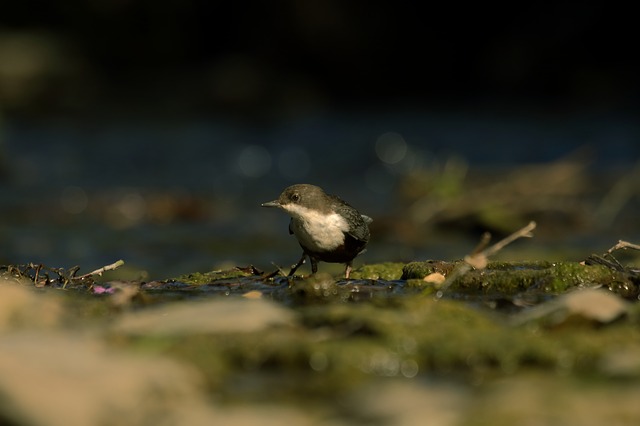
The dipper is notable for its unique bobbing action and behaviour as it dips in and out of the water, and walks into and underwater in search of food. When in flight, it is characterised by its low-level flight and whirring motion.
Largely, the dipper eats larvae and freshwater shrimp. It is an interesting species that lives alongside fast-flowing burns and rivers and often nests under bridges and in walls close to river banks.
Dotterel
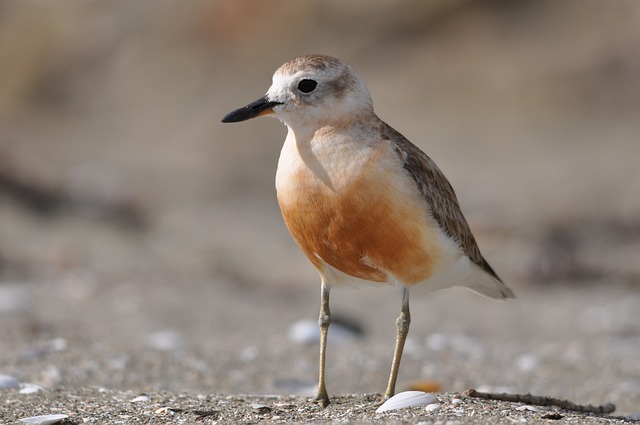
The dotterel is a migratory species found on Scotland’s high peaks in the summer months, and in groups at traditional stopping places during the spring migration. A medium-sized member of the plover family, the dotterel is characterised by grey-brown upper parts, a bright chestnut belly, a white chest band, throat and eyestripe and a dark cap.
Unusually, the female of the species is brighter than the male – an indication of their role-reversal in raising their young. Sadly, the dotterel is endangered, and on the ‘red list’ for urgent conservation.
Golden Eagle
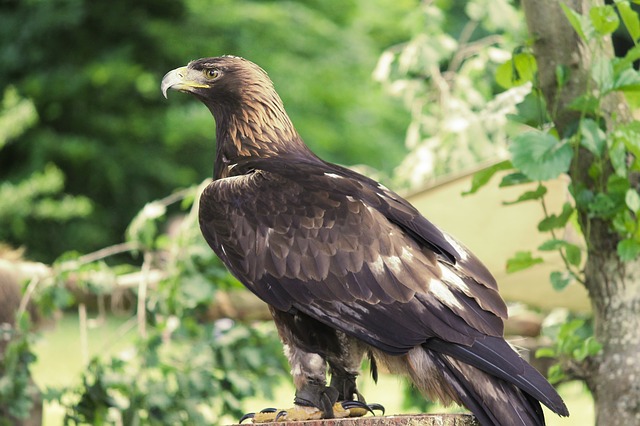
Surely one of the most iconic birds in the British Isles, the golden eagle is the top predator of the Scottish countryside. These massive birds of prey hunt mainly rabbits and mountain hares though will also catch other bird species like grouse, foxes and even young deer.
These majestic birds pair for life, and there are currently 440 breeding pairs in the UK, many of which use traditional nesting places that have been used for generations. This is the second largest bird of prey found in Scotland, with a wingspan of 204-220cm. Only the white-tailed sea eagle is larger.
Pictured is an adult example of the north American subspecies.
White-Tailed Eagle
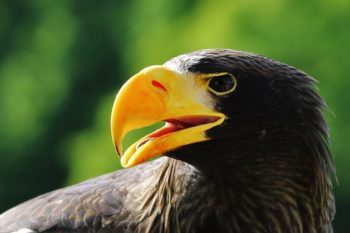
The white-tailed eagle is the largest bird of prey found in the British Isles and the fourth largest eagle found anywhere in the world. This Schedule 1 species went extinct in the UK during the early 20th century, due to illegal killing, and the present population is descended from reintroduced birds – to the west coast in the 1970s and to the east coast in 2007.
These huge Scottish birds are notable for their size, and can also be identified by means of their pale heads, white, wedge-shaped tails and broad, rectangular wings. They are scavengers but will also hunt for prey such as rabbits, fish and sea birds.
Eiders (& other Ducks)
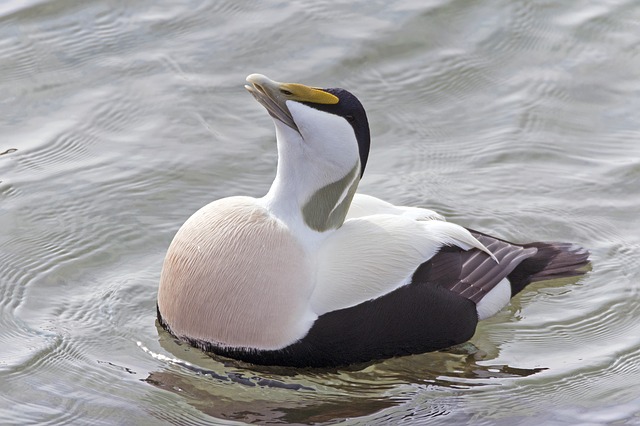
Scotland is also known for its winter concentrations of ducks and other related bird species. On Scotland’s shoreline, one notable sight is groups of eider ducks, which gather together in large groups close to shore in sandy bays, or strung out in long lines out beyond the breaking waves.
Eiders eat coastal molluscs, and their diet has brought them into conflict with mussel farmers.
Grebes
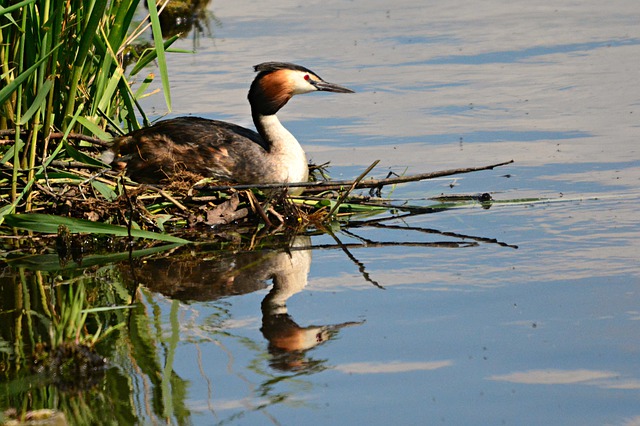
Of Scotland’s grebe species, perhaps the most attractive is the Slavonian grebe, with its golden ear tufts. The Slavonian grebe looks very like the black-necked grebe in winter but has whiter cheeks which almost meet at the back of its neck.
It has a distinctive trilling call. This species is on the Amber List for conservation due to the relatively small number of breeding pairs.
Goshawk
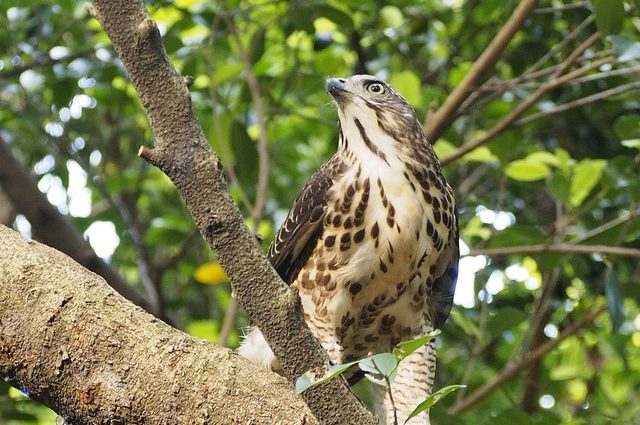
The goshawk is another one of the majestic Scottish birds of prey. Sadly, these birds are still persecuted and their nests sometimes plundered.
One of the wonders for bird watchers in Scotland are the ‘sky dance’ displays of the goshawk in late winter and spring. Fierce and fast-moving, the goshawk is a skilful hunter, which can catch prey in flight. The females of the species are much larger than the males.
Black Grouse
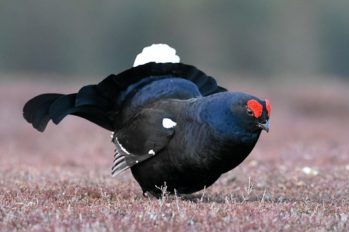
Just like the Capercaillie, another of Scotland’s grouse species, the black grouse is seriously under threat. Male black grouse have black plumage, a red eyebrow wattle, and white down each wing. The females are less conspicuous, with brownish grey colouration. Declines in this species sadly continue apace.
Like the Capercaillie, the black grouse conduct mating rituals at ‘leks’ or breeding sites, and are easily disturbed at these sites. If disturbed during the key period in spring, breeding may not take place at all for these Scottish birds.
Red Grouse
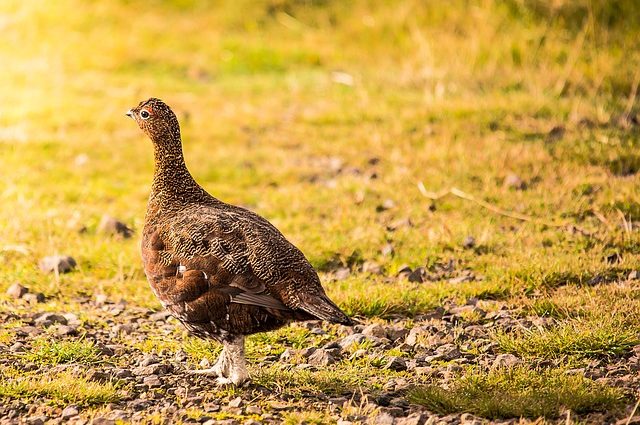
The red grouse is the most common grouse species in Scotland and is a game bird on many Scottish estates. These medium-sized Scottish birds live on the uplands all year round, travelling very little. Like other grouse species, their populations are declining – in part due to diseases and the loss of heather moorland.
Grouse estates are controversial due to practices of some grouse estate management practices, which may endanger other bird species and wildlife, and have an impact on the wider environment.
Hen Harrier
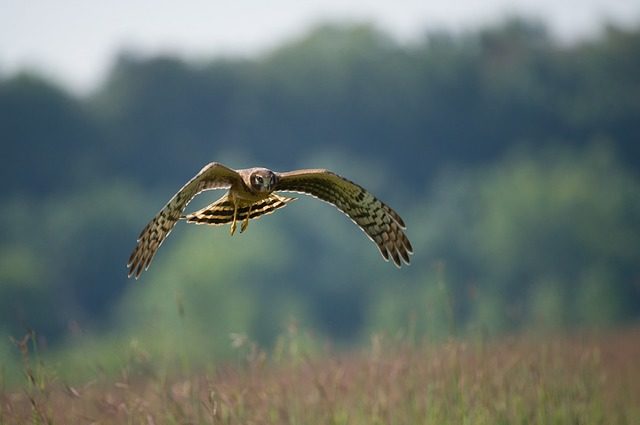
Sadly, the hen harrier is the most persecuted of the Scottish birds of prey. They are one of the main bird species commonly affected by grouse estate management.
The effect of this species on the number of grouse available for shoots is the cause of much modern-day conflict.
These beautiful birds fly low in search of food. Males are pale grey, females and adolescents brown with a white rump and long, barred tail.
Kestrel

Kestrels are another bird of prey that is a familiar sight in Scotland. Affected by changes in farming practice, the numbers of this species declined in the 1970s, but they have also more readily adapted to human environments than many other birds and can sometimes be found right in the heart of modern cities, as well as in more traditional environments.
They can often be seen hovering along roadside verges, with their pointed wings and long tails.
Red Kite
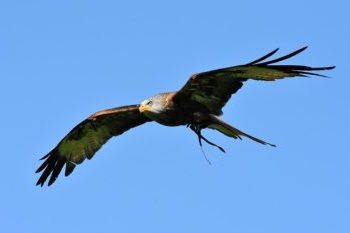
One of Scotland’s conservation success stories, the red kite has been successfully reintroduced to the Trossachs region, and to the Black Isle near Inverness.
This bird of prey is easily identifiable by its large wingspan (almost 2m). It feeds mostly on carrion, though will also predate small mammals and eat worms.
These Scottish birds can often be seen hovering near roads looking for roadkill.
Osprey
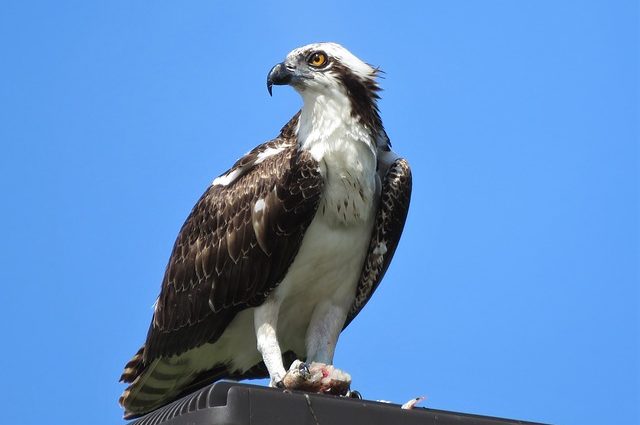
The osprey is a bird of prey species closely monitored in Scotland as at other breeding sites in the UK. These birds migrate to West Africa during the winter, returning to breeding sites where they can be seen in Scotland between March and September.
Satellite tracking has shown that these amazing birds can fly as far as 430kmin just one day! Bird watchers can see these birds at breeding sites in Speyside and Perth, where nest cams monitor their activities.
Osprey have a distinctive reverse W shape in flight, light underparts and dark patches midway along their long wings. Females incubate eggs while males range out to hunt and bring food back to their nests.
Owls
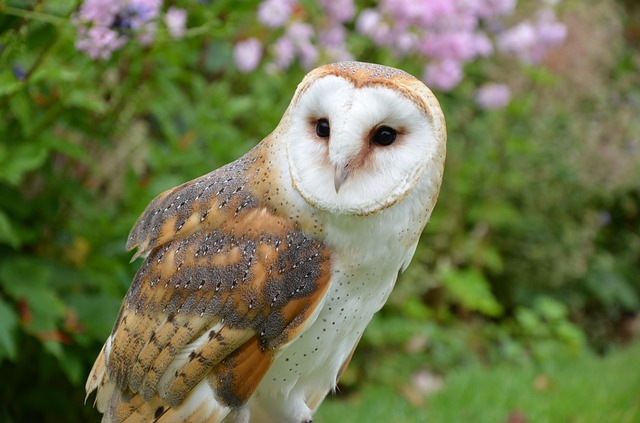
Scotland also boasts a range of iconic owl species.
Barn owls, tawny owls, short-eared owls and long-eared owls can all be seen (and heard) across the country.
The barn owl is widespread but has suffered declines over the last 50 years. Fortunately, this decline has been halted and in some areas, the population may now be increasing.
Merlin
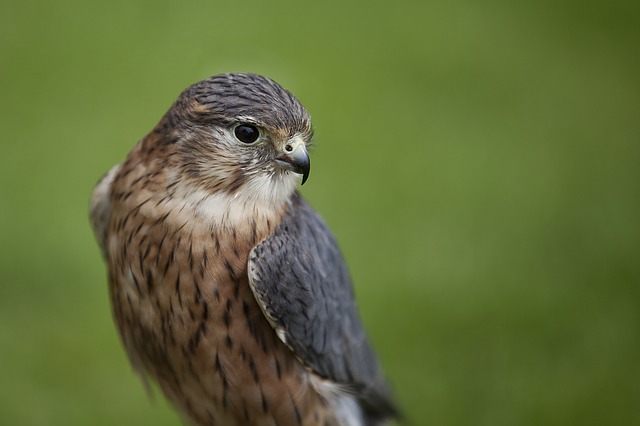
The merlin is the smallest breeding falcon in Scotland. It is a migrating resident, spending summer on moorland,where it raises its young mostly on meadow pipits, and moving to the coast in autumn and winter where it catches fast-moving prey and is notable for its extreme agility.
It has broad, short, pointed wings and looks like a small kestrel in outline. Males are grey/blue on top and have a dark bar at the tip of the tail and a tawny, speckled breast. Females are less distinctive, but have darker brown upperparts than the kestrel.
Peregrine Falcon
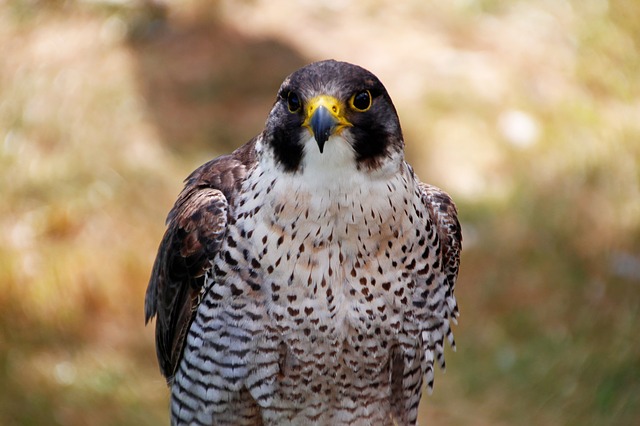
Nesting on Scotland’s cliffs and on rocky quarry sides, the peregrine falcon is known for its extreme hunting speed. After gaining height, these birds of prey can reach speeds of up to around 200 mph. This, and their ability to adapt their strategy for different types of prey means that they are especially adept hunters.
Blue-grey in colour, peregrine falcons have white faces, black moustache, and a speckled chest. They can be seen at appropriate sites throughout Scotland all year round.
Ptarmigan
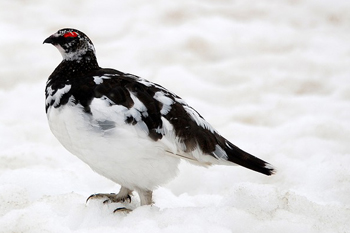
The smallest of Scotland’s grouse species, the ptarmigan breeds on high mountain peaks, though may move to forest edges in extreme cold weather. These Scottish birds are game birds, and eat shoots, leaves, leaf buds, berries and insects.
The Scottish ptarmigan are seasonally camouflaged; in summer, they are mottled grey, brown and black, with white undersides and wings. In the winter, however, they change their plumage, and are entirely white except for their blackish tails and eye patches.
Puffin
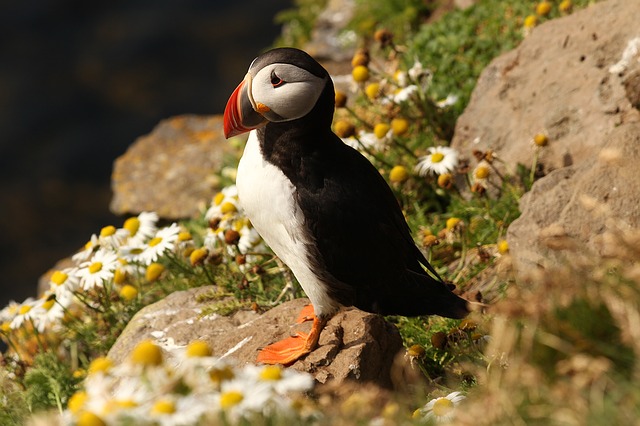
The clowns of the bird world, puffins are a commonly recognised and beloved species that can be found at a number of sites in Scotland. They nest underground in burrows on coastal nesting sites, and make distinctive chortling noises.
Baby puffins are sometimes cutely referred to as pufflings. There are plenty of places to enjoy puffin encounters in Scotland – one great puffin site, for example, is the Isle of Staffa.
Rook
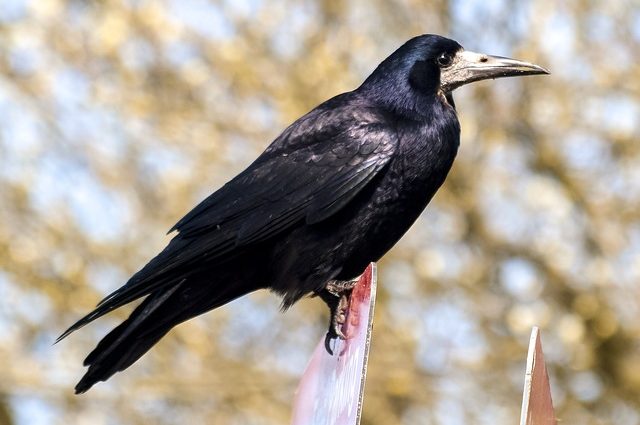
The rook is a common site in Scotland, and yet often overlooked. Rooks are common members of the corvid family, and are far more interesting than they may at first seem. Rooks gather in large crowds, and are a particularly sociable species. If you see more than a couple of ‘crows’ gathered together, they are likely to be rooks.
A group of rooks is sometimes called a ‘parliament’ and these parliaments of rooks can be quite wonderful wildlife spectacles, especially if viewed when returning to active rookeries during the main breeding season in spring and early summer.
Snow Bunting
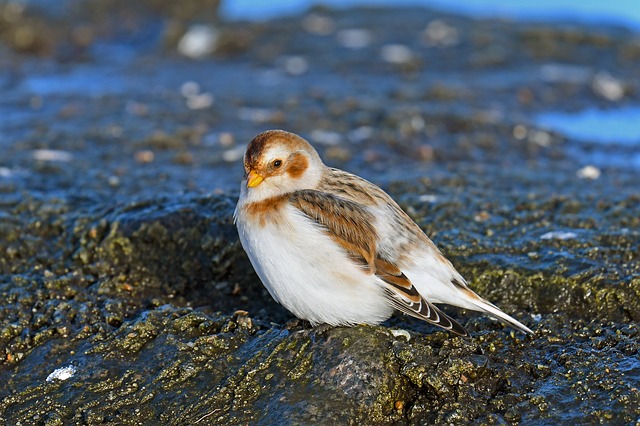
Snow buntings migrate south from colder climes to Scotland during the winter months, and are a scarce breeding species here.
These are large buntings with distinctive snowy plumage, which is different in the summer to in the autumn and winter. Just 60 pairs breed in the UK, while around 10,000-15,000 snow buntings winter in the UK.
Look for these Scottish birds in the north of the country, and down the east coast between their arrival in late September and their departure in February or March.
Storm Petrel
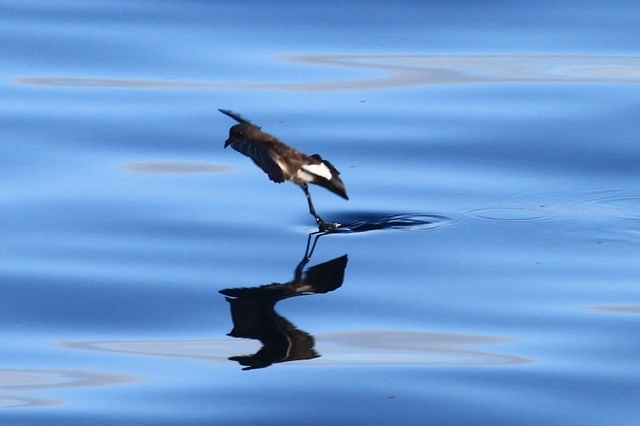
Scotland’s coasts are home to, or visited by a wide range of seabirds. One other seabird species worth noting is the storm petrel. The storm petrel is a bird a little larger than a sparrow, with black bodies and white rumps, without a forked tail. It is present at and close to breeding colonies on the islands on the west coast of Scotland and northern isles between May and September.
These Scottish birds only come to shore to breed and at night, and are best seen through binoculars from western headlands with onshore winds in spring and autumn. They can sometimes be seen skimming over the water following in the wake of fishing trawlers.
Whooper Swan
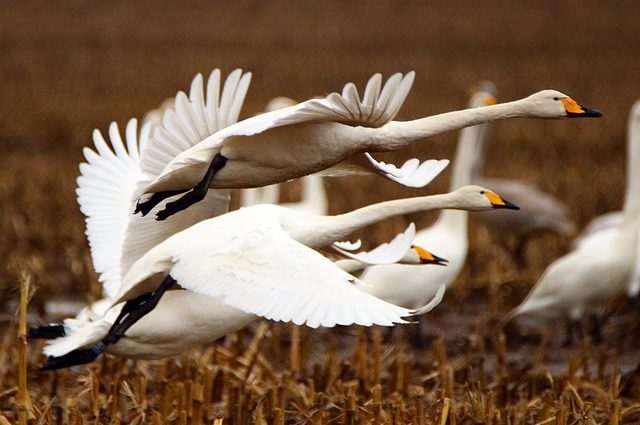
Mainly a winter visitor to Scotland from Iceland, a small number of breeding pairs do nest in the north of the country. There are currently believed to be in the region of 23 breeding pairs in the UK.
This majestic bird is on the Amber list for conservation and relies on fragile wetland sites and estuaries for migration and winter roosts. This large white swan is larger than the Berwick swan,which comes to the country for the winter from Siberia. Whooper swans have honking calls, while Berwick swans sound more like excited dogs.
Wintering Geese
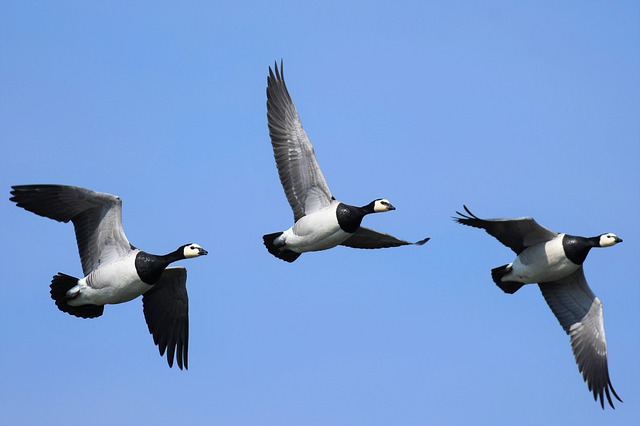
Other winter visitors to Scotland that rely on wetland sites and estuaries are geese. Flocks of geese make their way to the country from Greenland, Svalbard and Iceland in impressive numbers each winter and are another of the country’s impressive wildlife spectacles.
Skeins of geese travelling in their ‘v’ formations are a sight of the changing seasons each year. Notable sights for fans of Scottish birds are the Svalbard barnacle geese at Caerlaverock Wetland Centre, geese from Greenland on Islay in the Inner Hebrides, and pink-footed geese at a number of sites including Montrose Basin, Loch of Strathbeg, and Loch Leven National Nature Reserve.
Greater Spotted Woodpecker
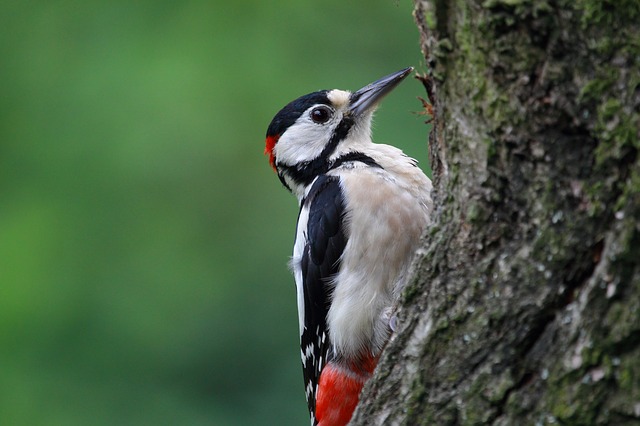
One attractive bird species found in Scottish woodlands and at rural bird tables in wooded areas is the greater spotted woodpecker. This bird is often heard more often than it is seen – hammering on tree trunks to create its distinctive drumming sound, or making its loud call.
These black and whiteScottish birds, around the size of a blackbird, have distinctive patterns of plumage. Males have red patches on the back of their heads and rumps, and young birds have red crowns.
Other Summer Visitors
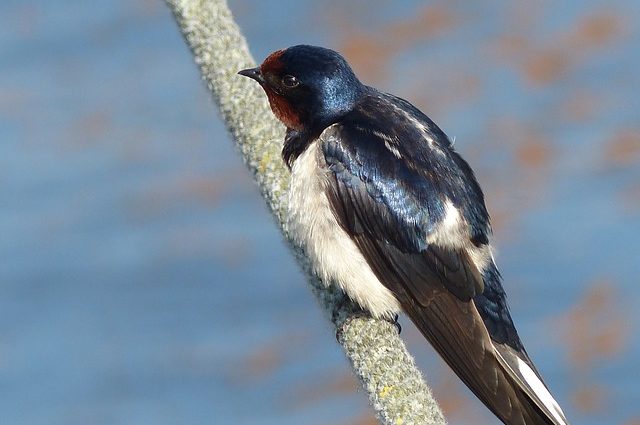
One of my favourites of Scotland’s summer visitors, for example, is the swallow, which arrives each year in April or May and stays until around October.
These nest in farm buildings or outhouses or under the eaves of houses across the country and swoop and dive across the skies over farmland and open pasture, feeding on the wing. House martins, sand martins and swifts are other similar summer visitors that desperately require our notice and protection.
Other Scottish Garden Birds
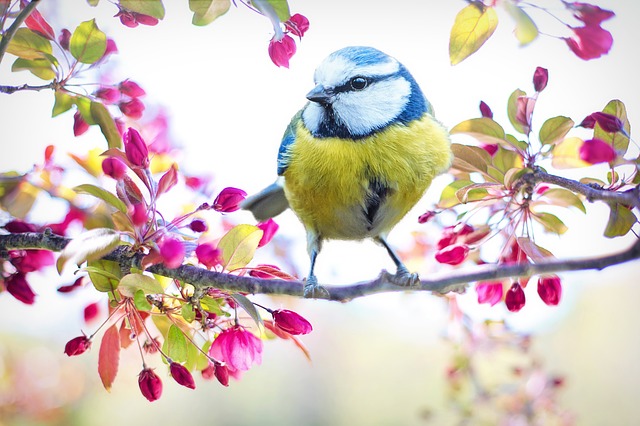
On our Scottish bird feeder, we have greater spotted woodpeckers, rooks (and other corvids) and sometimes even grouse from a nearby estate. We have barn owls and tawny owls nesting nearby, and also often see birds of prey in surrounding farmland.
We also see a range of other common visitors not mentioned above, including blackbirds, wrens, tits, chaffinches, goldfinches, thrushes, starlings, robins, wood pigeons, collared doves and more…
Of course, there are many, many more bird species that are resident in and visitors to Scotland. The above list is merely a sample of some of the most interesting or distinctive of the many Scottish birds that can be found in the country and there are plenty more to discover.
There are many prime birdwatching sites across Scotland, where you can learn more about Scottish birds and observe them in their natural habitats.
Watching Scotland’s many bird species is one of the joys of a visit to the country and can enrich your experience and make you want to be a part of conservation efforts designed to protect our most endangered bird species.
View the species list at the Highland Titles Nature Reserve at Keil Hill.
More information on the nature reserves managed by the RSPB in Scotland

Brought to you by Highland Titles
Highland Titles’ mission is to conserve Scotland, one square foot at a time™. By selling souvenir plots of land, we are funding our Nature Reserves and conservation projects. Join us and become a Lord, Lady or Laird* of the Glen!
What you should do next...
- Browse our plots to claim your title of Lord or Lady of the Glen
- Discover the masjetic Kilnaish Estate
- View our fun gifts and accessories, inspired by the Scottish Highlands
















